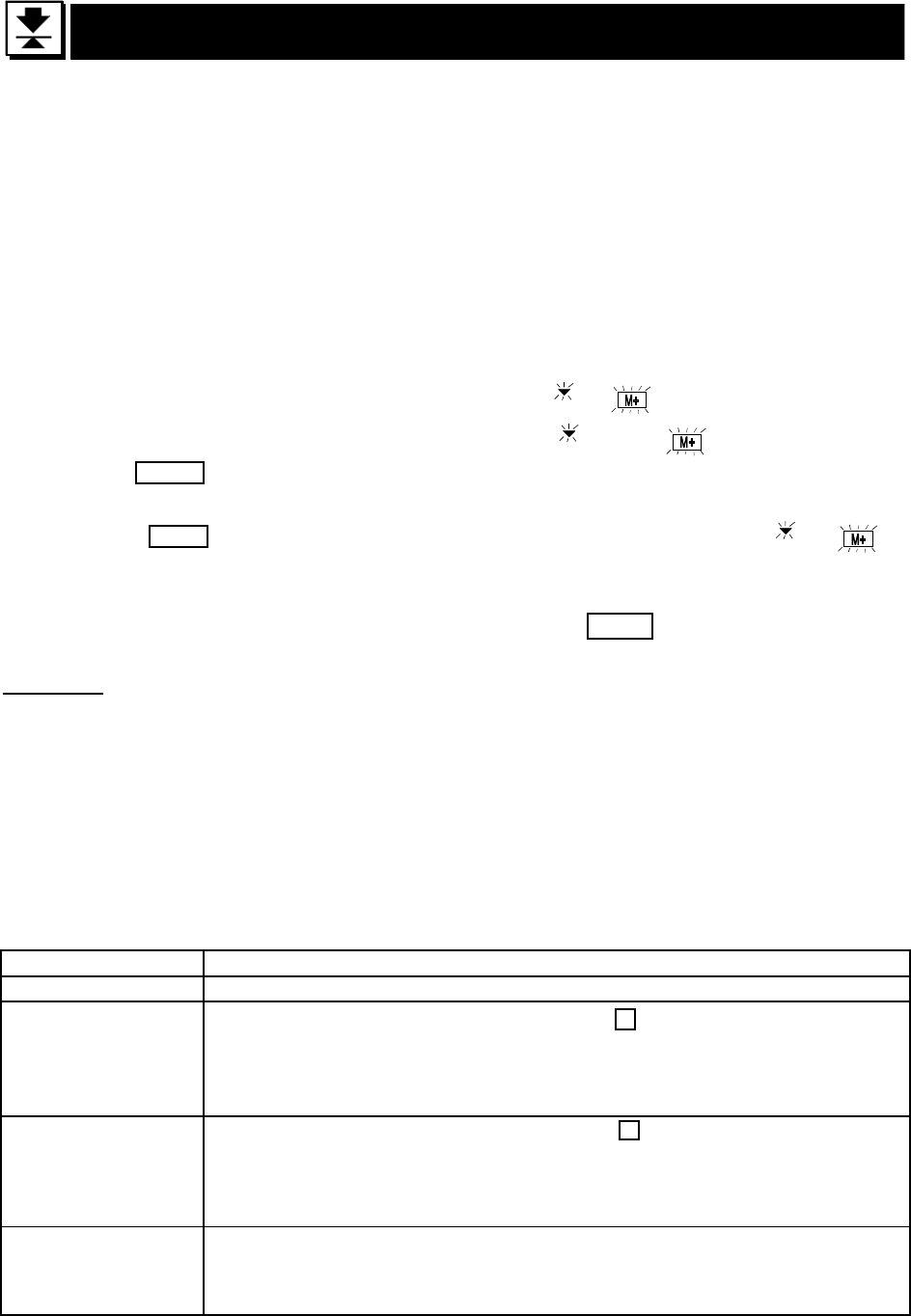
HW-G Instruction Manual Page 25
HW-G OZIM v1a
This function counts the number of weighed items, calculates the total mass value and
can display the number and accumulated mass value.
It is necessary to set the parameters of the “accumulation function ( f8 )” in the function
table in advance to use this function.
It is necessary to set the parameters of the “print mode ( f9 )” in the function table in
advance to use the optional built-in printer.
Operation and Switches
The display of the accumulation count has a blinking
M+
or without a unit.
The display of the accumulation value has a blinking
M+
kg or kg with a unit.
Pressing the MODE switch, the accumulation count and accumulation value is displayed.
Pressing the ZERO switch in the accumulation function while a blinking
M+
or is
displayed, resets the current function. The count and accumulated value become zero.
When the optional built-in printer is installed and the PRINT switch is pressed, the
accumulation data, date and data number are printed. Date is set at function table f16 .
Caution
The accumulation function can only be used with the first weighing unit
accumulated, e.g. you cannot accumulate pcs while displaying kg.
Parameter List and Word Definition
The “near-zero” is within ±4 digits from the zero point in the unit of kg.
The “digit”, a unit of display, is equivalent to the minimum graduation.
The “zero point” is the fundamental starting point to weighing.
Function table Meaning & Purpose
f8 0 Accumulation function not used.
The scale accumulates the data, if the F switch is pressed when
the display is a positive stable value above near-zero. The next
f8 1 accumulation can be performed after the display returns to
near-zero or to a negative value.
f8 2 The scale accumulates the data, if the F switch is pressed, when
the display is a stable value and outside near-zero. The next
accumulation can be performed after the display returns to
near-zero.
f8 3 When the display is a positive stable value, the scale accumulates
the data automatically. The next accumulation can be performed
after the display returns to near-zero or to a negative value.
10 Accumulation Function


















